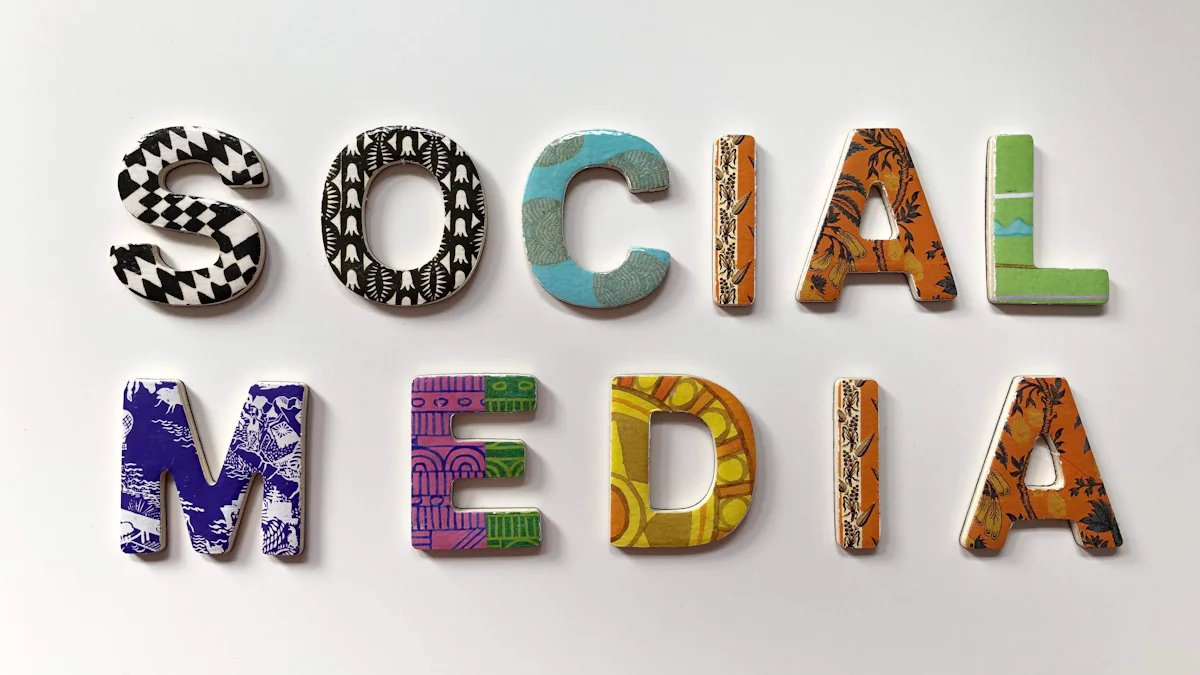How Agencies Are Shaping Influencer Marketing in 2025

In 2025, influencer marketing is no longer just a trend—it’s a powerhouse driving brand growth. With brands projected to spend $9.29 billion on influencer campaigns, you can see how critical this space has become. Agencies are stepping up, focusing on authenticity, diversity, and data-driven strategies to keep brands ahead. They’re not just connecting brands with influencers; they’re shaping the future. Nearly 60% of marketers plan to increase their budgets, and agencies are leading the charge by refining influencer selections and aligning them with brand values. It’s clear: agency influencer marketing is transforming how brands connect with audiences.
Emerging Trends in Influencer Marketing

The Rise of AI and Automation
AI-driven influencer discovery and campaign management
AI is revolutionizing influencer marketing by making the process of finding the perfect influencer faster and smarter. Instead of manually sifting through profiles, you can now rely on AI tools to analyze massive amounts of social media data. These tools match influencers to your brand based on audience demographics, engagement rates, and even shared values. This saves you time and ensures you connect with influencers who truly align with your goals. Plus, AI doesn’t stop there. It tracks campaign performance in real time, giving you clear insights into what’s working and what’s not. You can even detect influencer fraud, like fake followers or inauthentic engagement, with AI’s keen eye for patterns.
Predictive analytics for campaign success
Imagine knowing how successful your campaign will be before it even starts. That’s the power of predictive analytics. By analyzing historical data, these tools forecast outcomes and help you focus on strategies that deliver the best ROI. For example, they can identify which audience segments are most likely to engage with your content or which platforms will drive the highest conversions. This means you can adjust your campaigns on the fly, ensuring every dollar you spend counts. Predictive analytics also helps you personalize your approach, making your audience feel seen and valued.
Social Commerce Integration
Influencers as key drivers of in-app purchases
Social commerce is booming in 2025, and influencers are at the heart of it. They’re not just promoting products—they’re driving sales directly within apps. When influencers recommend a product, their followers trust them, often treating their advice like a friend’s suggestion. This personal connection makes it easier for consumers to click “buy” without hesitation. In fact, over half of consumers look for real-life photos or videos before making a purchase, showing how much they value authenticity in influencer content.
Shoppable content and live-stream shopping
Shoppable content is changing the game. You’ve probably seen posts or videos where you can tap on a product and buy it instantly. This seamless experience is what today’s consumers crave. Live-stream shopping takes it a step further. Influencers showcase products in real time, answer questions, and create a sense of urgency with limited-time offers. It’s like having a personal shopping assistant, but online. By combining user-generated content, reviews, and influencer recommendations, brands are creating a shopping experience that feels trustworthy and engaging.
The Growing Influence of Nano-Influencers
Why brands are prioritizing smaller, niche audiences
Bigger isn’t always better. Nano-influencers, with their smaller but highly engaged audiences, are proving this point. These influencers often focus on specific niches, making them perfect for brands looking to connect with a targeted group. Their relatability and authenticity make their endorsements feel genuine, which builds trust with their followers. It’s no wonder 56% of marketers report better ROI when working with nano- and micro-influencers compared to larger ones.
Higher engagement rates and cost-effectiveness
Nano-influencers offer a win-win for brands. They deliver higher engagement rates while being more budget-friendly. For instance, their return on influencer spend (ROIS) is over three times higher than that of macro-influencers. This means you can work with multiple nano-influencers simultaneously, reaching diverse audiences without breaking the bank. Their relatability and direct engagement with followers make them a powerful tool in your influencer marketing strategy.
Focus on Authenticity and Transparency
The demand for genuine influencer-brand partnerships
You’ve probably noticed how much people value authenticity these days. It’s no longer enough for influencers to simply promote a product. Audiences want to know that influencers genuinely believe in what they’re endorsing. They want to see real connections between brands and influencers. This is why agencies are prioritizing partnerships that feel natural and authentic.
Authentic influencers bring passion to their content. They share personal stories, provide valuable insights, and engage with their followers in meaningful ways. This creates trust, which is priceless in marketing. When you work with influencers who truly align with your brand, their audience feels it. They’re more likely to engage, trust your product, and even make a purchase.
Brands that focus on authenticity see better results. Influencers who genuinely use and love a product can create content that resonates deeply with their audience. This approach not only builds trust but also strengthens your brand’s reputation.
The role of disclosure and ethical marketing practices
Transparency is a big deal in 2025. Consumers want to know if content is sponsored or if influencers are being paid to promote a product. Without clear disclosure, trust can quickly erode. That’s why hashtags like #ad and #sponsored have become so common. They let audiences know when content is part of a paid partnership.
Today’s consumers are smarter than ever. They expect honesty from both brands and influencers.
When influencers disclose their partnerships, it shows respect for their audience. It also helps consumers make informed decisions about the products they buy. Ethical marketing practices like this are essential for building long-term trust.
Agencies are leading the way by encouraging influencers to be upfront about sponsorships. This transparency doesn’t just protect your brand—it strengthens it. When you prioritize ethical practices, you show your audience that you value their trust. And that trust is what keeps them coming back.
Strategies Agencies Are Using to Stay Ahead
Long-Term Collaborations Over One-Off Campaigns
Building deeper relationships between brands and influencers
Long-term collaborations are becoming the gold standard in influencer marketing. When you work with influencers over time, you build a stronger bond that benefits both sides. These partnerships foster loyalty, making influencers more likely to advocate for your brand authentically. Their audience notices this consistency, which boosts trust and engagement.
You also get the advantage of deeper connections. Repeated promotions make your brand more familiar and relatable to followers. This approach feels less like advertising and more like a genuine recommendation. Plus, long-term deals often come with cost savings, giving you better ROI while strengthening your influencer relationships.
Benefits of consistent messaging and audience trust
Consistency is key. When influencers repeatedly share your message, it reinforces your brand’s identity. Their audience starts associating your brand with reliability and quality. This trust translates into higher engagement and better results for your campaigns. Over time, these collaborations create a sense of authenticity that one-off campaigns just can’t match.
Data-Driven Campaigns
Leveraging analytics to measure ROI and optimize strategies
Data is your secret weapon for successful influencer campaigns. Real-time analytics let you track performance as it happens. You can monitor engagement rates, impressions, and conversions to see what’s working. If something isn’t hitting the mark, you can adjust your strategy on the fly.
Personalization is another big win. By analyzing audience behavior, you can tailor campaigns to specific segments. This makes your content more relevant and impactful. Measuring ROI becomes easier too. With clear data, you’ll know exactly how your investment is paying off and where to improve.
Tools and platforms agencies are using for insights
Agencies rely on powerful tools to gather insights. Platforms like Emplifi and Grin help track performance metrics and audience demographics. Creator.co and Promoty focus on finding influencers who align with your brand. Tools like Traackr and Aspire go a step further, offering ROI tracking and campaign management. These platforms simplify the process, giving you the data you need to make informed decisions.
Cross-Platform Campaigns
Adapting to the rise of new platforms like LinkedIn
LinkedIn is no longer just for professionals. It’s becoming a hotspot for influencer marketing trends, especially in B2B spaces. Agencies are helping brands tap into this platform by connecting them with thought leaders and niche influencers. This approach builds credibility and expands your reach to a highly engaged audience.
Creating cohesive strategies across multiple social channels
Your audience isn’t just on one platform, so your strategy shouldn’t be either. Agencies are crafting campaigns that work seamlessly across Instagram, TikTok, YouTube, and more. This cross-platform approach ensures your message stays consistent while adapting to each platform’s unique style. By doing this, you maximize your reach and engagement, making your campaigns more effective.
Diversifying Influencer Portfolios
Balancing nano-, micro-, and macro-influencers
You’ve probably noticed that not all influencers are created equal. Some have millions of followers, while others focus on smaller, niche audiences. Agencies are getting smart about mixing these different types of influencers to create well-rounded campaigns. Here’s how they’re doing it:
- Diverse reach and engagement: Macro-influencers bring massive visibility, while micro- and nano-influencers deliver higher engagement with niche audiences.
- Complementary strategies: Macro-influencers generate buzz, and micro-influencers keep the conversation going with their loyal followers.
- Flexibility and adaptability: Agencies can shift budgets between influencer tiers depending on the campaign’s goals. This keeps strategies agile and responsive.
- Enhanced content variety: Collaborating with influencers across tiers creates a mix of content styles, appealing to different audience segments.
By balancing these influencer types, you can maximize your campaign’s impact. It’s like having a team where everyone plays to their strengths.
Expanding into niche markets and industries
Niche markets are where the magic happens. Agencies are diving into specialized industries to connect with audiences who share specific interests. Whether it’s eco-friendly products or gaming gear, niche influencers know their audience inside out. They speak the language, understand the trends, and build trust faster.
When you tap into these markets, you’re not just reaching people—you’re reaching the right people. This targeted approach boosts engagement and ensures your message resonates.
Leveraging User-Generated and Employee-Generated Content
Enhancing authenticity through user-created content
User-generated content (UGC) is a game-changer. When your customers share their experiences, it feels real and relatable. People trust other people more than polished ads. UGC adds that human touch, making your brand feel approachable.
Encouraging your audience to create content doesn’t just build trust—it also saves you time and money. You get authentic, engaging material without needing a big production budget.
Encouraging employees to act as brand advocates
Your employees can be your best influencers. When they share their experiences, it shows your brand’s human side. Here’s a quick look at the benefits:
| Benefit | Description |
|---|---|
| Authenticity | Employee-generated content (EGC) reflects real experiences, building trust with your audience. |
| Increased Engagement | It humanizes your brand, making it more relatable and engaging for viewers. |
| Cost-Effectiveness | Employees create content directly from the workplace, saving you money on production. |
| Attracting Talent | It showcases your company culture, drawing in applicants who align with your values. |
When employees become advocates, they amplify your message in a way that feels genuine. It’s a win-win for your brand and your team.
Challenges and Solutions in Influencer Marketing
Maintaining Authenticity in a Saturated Market
Avoiding over-commercialization of influencer content
In a world flooded with ads, keeping influencer content authentic is a challenge. Over-commercialization can make campaigns feel forced, turning audiences away. You can avoid this by working with influencers who genuinely align with your brand. Micro and nano influencers are great for this. They connect with niche audiences and build real relationships that feel natural.
Transparency is another key. Make sure influencers clearly disclose sponsored content using hashtags like #ad or #sponsored. This honesty builds trust and shows your audience that you value their intelligence. Authentic influencers also stand out because they create content with passion and expertise. Their genuine connection with followers cuts through the noise and keeps your campaigns relatable.
Encouraging influencers to stay true to their voice
When influencers stay true to their voice, their content feels more real. Encourage them to share personal stories or insights about your product. Let them have creative freedom. This approach not only makes the content more engaging but also strengthens the bond between the influencer and their audience.
Combating Influencer Fraud
Identifying fake followers and engagement
Fake followers and engagement can ruin your campaign’s credibility. Luckily, AI tools can help. These technologies analyze patterns like sudden spikes in followers or unusual engagement rates. They also check audience demographics for inconsistencies, helping you spot fake accounts.
Platforms like Influencity make this process even easier. They offer fraud detection tools that flag suspicious activity early. By comparing metrics against industry benchmarks, you can confidently choose influencers who bring real value to your campaigns.
Tools and techniques for verifying influencer authenticity
Using platforms like Influencity streamlines the entire influencer marketing process. From discovery to reporting, these tools ensure transparency and consistency. They also track performance in real time, so you can measure success and adjust strategies as needed. With advanced fraud detection, you can focus on building authentic partnerships without worrying about fake engagement.
Navigating Platform Algorithm Changes
Adapting to reduced organic reach
Social media algorithms are always changing, and reduced organic reach is a common hurdle. To adapt, focus on authentic engagement. Start meaningful conversations with your audience. Short-form video content is another powerful tool. It grabs attention quickly and boosts visibility.
Consistency is crucial. Regular posting signals activity to algorithms, keeping your content in front of your audience. Engaging right after posting also helps. Quick interactions can push your content higher in feeds, ensuring it reaches more people.
Strategies for staying visible in a competitive landscape
Staying visible requires a mix of strategies. Use platform-specific features like Instagram Reels or TikTok trends to enhance your reach. High-quality content encourages shares and positive interactions, which algorithms love. Paid promotions can also help you maintain visibility when organic reach dips.
Don’t forget to analyze performance metrics regularly. This helps you adjust your approach and stay ahead of the competition. By experimenting with user-generated content and staying updated on algorithm changes, you can keep your campaigns effective and engaging.
Managing Rising Costs
Budgeting for high-demand influencers
Working with high-demand influencers can feel like a double-edged sword. On one hand, they bring massive reach and credibility. On the other, their fees can quickly eat into your marketing budget. To make the most of your investment, you need a solid plan.
Start by setting clear goals for your campaign. Are you looking for brand awareness, conversions, or something else? Knowing this helps you decide if a high-demand influencer is worth the cost. Next, negotiate wisely. Many influencers offer package deals for long-term collaborations. These deals often include multiple posts, stories, or even exclusive content.
You can also stretch your budget by focusing on platforms where the influencer’s audience is most active. For example, if their followers engage more on Instagram than TikTok, prioritize Instagram content. This targeted approach ensures you get the best bang for your buck.
Exploring cost-effective alternatives like nano-influencers
If high-demand influencers feel out of reach, don’t worry. Nano- and micro-influencers offer a cost-effective alternative. They may have smaller followings, but their engagement rates are often higher. Their audiences trust them, making their recommendations more impactful.
Here’s why they’re a smart choice:
- They charge less for posts, saving you money.
- Their niche audiences are highly targeted, which boosts ROI.
- They create authentic content that resonates with followers.
You can also explore platforms designed for budget-conscious brands. For instance:
| Platform | Description | Pricing |
|---|---|---|
| Influencer Hero | A comprehensive range of services at a lower cost, ideal for SMEs. | Starting from $249 |
By combining nano-influencers with tools like Influencer Hero, you can run effective campaigns without overspending. This strategy lets you reach diverse audiences while keeping costs under control.
Tip: Diversify your influencer mix. Pair nano-influencers with micro- or macro-influencers for a balanced approach. This way, you maximize reach and engagement without breaking the bank.
Future Outlook for Influencer Marketing Agencies

Sustainability and Social Responsibility
The rise of eco-conscious campaigns
Sustainability is no longer just a buzzword—it’s a priority for consumers in 2025. People want brands that care about the planet and align with their values. You’ve probably noticed how purpose-driven campaigns are taking over, especially in industries like beauty. These campaigns highlight environmental and social initiatives, making them incredibly effective.
Agencies are stepping up by connecting brands with influencers who champion sustainability. This approach creates authentic partnerships that resonate with socially conscious audiences. When influencers share their commitment to eco-friendly practices, it sparks meaningful conversations and builds trust.
- Consumers support brands that prioritize sustainability, diversity, and social impact.
- Influencers who advocate for these causes are becoming essential partners.
- Purpose-driven campaigns help brands connect emotionally with their audience.
Partnering with influencers who align with brand values
You know how important it is for a brand to feel genuine. Agencies are making this happen by aligning brands with influencers who share similar values. This strategy fosters real engagement and connects you with like-minded customers.
When influencers genuinely believe in your mission, their content feels more authentic. It’s not just about selling a product—it’s about creating a shared purpose. This kind of partnership strengthens your brand’s image and builds loyalty among your audience.
- Agencies align brands with social movements to enhance authenticity.
- Collaborating with value-driven influencers sparks genuine engagement.
Evolving Content Formats
The growing popularity of short-form video and interactive content
Short-form videos are dominating influencer marketing. Platforms like Instagram and TikTok make it easy for influencers to create engaging, bite-sized content. You’ve probably seen how Instagram Stories and Reels grab attention instantly. They’re quick, fun, and perfect for keeping your audience hooked.
Interactive content is also on the rise. Polls, quizzes, and live Q&A sessions let followers actively participate, making them feel more connected to your brand. These formats are not just trendy—they’re effective.
- 78% of marketers say Instagram posts are the most effective format.
- Instagram Stories rank as the second most popular choice.
- Influencers are using diverse video formats to engage audiences.
Experimenting with AR/VR and immersive experiences
Imagine giving your audience a front-row seat to a fashion show or letting them explore a virtual pop-up shop. That’s the power of AR and VR in influencer marketing. Agencies are using these technologies to create unforgettable experiences.
For example, brands like Nike and HBO have used AR to blend virtual and real-world interactions. These immersive campaigns boost engagement and leave a lasting impression. You can use AR/VR to stand out and connect with your audience in exciting new ways.
- Veuve Clicquot used AR to enhance brand awareness at events.
- Vogue streamed live runway shows in VR, offering exclusive access.
- Snapchat’s AR features created interactive pop-up shops for brands.
The Role of Agencies in Shaping the Future
Driving innovation through technology and creativity
Agencies are at the forefront of influencer marketing predictions. They’re using data-driven strategies to ensure campaigns hit the mark. By analyzing engagement metrics and follower demographics, agencies help you connect with the right audience.
They’re also pushing creative boundaries. From experimenting with new content formats to leveraging cutting-edge tech, agencies are shaping the trends to watch. Their expertise ensures your campaigns stay fresh and effective.
Building stronger, more meaningful brand-influencer relationships
Long-term partnerships are the future. Agencies are helping brands move away from one-off posts to deeper collaborations. These relationships allow influencers to integrate your brand into their narrative, making endorsements feel more authentic.
When influencers have creative freedom, their content resonates more with their audience. This builds trust and loyalty, which benefits both you and the influencer. Agencies make this process seamless by managing everything from selection to performance analysis.
- Agencies foster long-term partnerships for authenticity and loyalty.
- Influencers gain creative freedom, leading to more impactful content.
The Return of In-Person Events
Opportunities for personal engagement with audiences
In-person events are making a big comeback in 2025, and they’re opening up exciting opportunities for influencer marketing. These events give you the chance to connect with your audience in ways that digital campaigns just can’t match. Here’s what makes them so valuable:
- Networking opportunities: You can foster real connections between brands, influencers, and consumers. These face-to-face interactions build trust and strengthen relationships.
- Learning from industry leaders: Keynote speeches and panel discussions at events let you gain insights from the best in the business.
- Spotting trends: You’ll discover emerging strategies and trends in influencer marketing that can keep you ahead of the curve.
- Casual conversations: Informal networking settings encourage honest discussions and open doors to potential partnerships.
These events aren’t just about promoting products. They’re about creating meaningful experiences that leave a lasting impression on your audience.
Combining digital and physical experiences for greater impact
Blending digital and physical experiences—often called “phygital” strategies—takes your marketing to the next level. This approach creates a seamless journey for your audience, combining the convenience of digital with the personal touch of in-person interactions.
For example, imagine hosting an event where attendees can scan QR codes to access exclusive online content or participate in live polls. This kind of integration ensures smooth transitions between the physical and digital worlds. It also enhances the customer journey, making every interaction feel intentional and engaging.
Phygital strategies do more than just impress your audience. They create personalized experiences that stick. When you merge the immediacy of face-to-face interactions with the flexibility of digital tools, you foster deeper engagement and loyalty.
By combining these two realms, you’re not just meeting customer expectations—you’re exceeding them. This blend of experiences makes your brand memorable and keeps your audience coming back for more.
As you’ve seen, 2025 is reshaping how agencies approach influencer marketing. Trends like AI-driven tools, nano-influencers, and social commerce are driving change. Agencies are staying ahead by focusing on long-term partnerships, data-driven strategies, and cross-platform campaigns. Challenges like rising costs and authenticity demand creative solutions, but they also open doors for innovation.
To thrive, you should embrace hyper-personalization powered by AI and explore generative AI tools for content creation. Engage with decentralized communities to foster niche connections. Align your brand values with customer preferences to build trust. These steps will help you stay competitive and connect meaningfully with your audience.
The future belongs to those who adapt quickly and innovate boldly. Are you ready to lead the way?
FAQ
What is the biggest trend in influencer marketing for 2025?
AI and automation are leading the way. You’ll see AI tools helping with influencer discovery, campaign management, and even predicting campaign success. These tools save time and make your campaigns smarter and more effective.
Why are nano-influencers so popular now?
Nano-influencers connect with niche audiences in a way larger influencers can’t. Their followers trust them more, which leads to higher engagement. Plus, they’re budget-friendly, making them a great choice for brands looking to maximize ROI.
How can you ensure authenticity in influencer campaigns?
Work with influencers who genuinely align with your brand values. Let them have creative freedom to share personal stories. Also, encourage clear disclosure of sponsored content to build trust with their audience.
What’s the best way to measure influencer marketing success?
Use analytics tools to track metrics like engagement rates, impressions, and conversions. Platforms like Traackr or Aspire provide real-time insights, helping you optimize your strategy and measure ROI effectively.
Are in-person events worth it in 2025?
Absolutely! In-person events let you connect with audiences on a deeper level. Combine them with digital experiences for a “phygital” strategy that creates memorable, engaging interactions.
See Also
Key Influencer Marketing Trends To Follow In 2024
15 Essential Influencer Marketing Platforms For 2024
Effective TikTok Influencer Marketing Tactics For 2024
